Most people think they know how much they sleep. But if you’ve ever woken up feeling exhausted after what felt like a full night’s rest, you’re not alone. The truth is, your brain can trick you. That’s where actigraphy comes in - a simple, non-invasive way to track your real sleep patterns without spending a night in a lab.
What Is Actigraphy, Really?
Actigraphy isn’t magic. It’s a small device - usually worn on the wrist like a watch or ring - that records movement. No heart rate, no brainwaves, just motion. The idea is simple: when you’re asleep, you move less. When you’re awake, you move more. Algorithms turn those movements into sleep estimates: how long you slept, how long it took to fall asleep, how often you woke up. It’s not new. Researchers at Stanford and the University of Pittsburgh started using it in the 1980s. Back then, the devices were clunky and expensive. Today, the same tech is inside your Fitbit, Oura Ring, or Garmin watch. The difference? Modern versions are accurate enough for doctors to use - if you know how to interpret them.How It Works (And Where It Fails)
Modern actigraphs use three-axis accelerometers to catch movement in every direction. They record data every 10 seconds or even more frequently - up to 100 times per second in medical-grade devices like the ActivInsights GENEActiv. That raw data gets processed by algorithms that decide: sleep or wake? Here’s the catch: if you lie perfectly still while awake, the device thinks you’re asleep. That’s called motionless wake. It’s a major flaw. Studies show these devices can misidentify wake time as sleep anywhere from 20% to 70% of the time, depending on the algorithm and the person. Healthy adults? Accuracy might be around 80%. People with insomnia? It drops. That’s why actigraphy doesn’t tell you if you had REM sleep or deep sleep. It doesn’t measure brain activity. It only guesses sleep based on stillness. For that, you need polysomnography - the full sleep study with electrodes on your scalp. But that’s expensive, uncomfortable, and limited to one or two nights in a clinic. Actigraphy wins on time. You can wear it for weeks. That’s the real power: seeing patterns over time.Medical Use vs. Consumer Gadgets
Not all wearables are created equal. Medical-grade actigraphs like the Philips Actiwatch Spectrum Plus cost between $1,200 and $1,800. They’re FDA-cleared, used in sleep clinics, and come with software that doctors are trained to interpret. These devices are often prescribed for insomnia, circadian rhythm disorders, or to check if a patient’s reported sleep matches reality - especially in cases of paradoxical insomnia, where someone thinks they slept two hours but actually slept seven. Consumer devices? Fitbit Charge 5, Oura Ring, Apple Watch - they use similar motion sensors. But they’re not medical devices. They’re wellness tools. Their algorithms are tuned for mass appeal, not clinical precision. A 2022 Stanford study found Oura Ring’s sleep duration estimates matched lab PSG within 90% - great for trends. But its REM and deep sleep estimates? Often off by 30 minutes or more. The American Academy of Sleep Medicine says actigraphy has “moderate evidence” for tracking sleep-wake patterns in adults with insomnia. But “low evidence” for diagnosing sleep apnea, narcolepsy, or other specific disorders. That’s a key distinction. It’s not a diagnostic tool. It’s a monitoring tool.Who Benefits Most From Tracking Sleep at Home?
Not everyone needs this. But if you fall into one of these groups, it can be life-changing:- You think you’re not sleeping enough - but your doctor says you are. Actigraphy can prove it.
- You have trouble falling asleep at night or wake up too early. Tracking helps spot patterns - like late-night screen use or inconsistent bedtimes.
- You travel often and struggle with jet lag. Actigraphy shows how long it takes your body to adjust.
- You’re on a sleep treatment plan (like CBT-I) and need to measure progress.
- You’ve been told you have a circadian rhythm disorder. Actigraphy is the gold standard for confirming it.
How to Use It Right
If you’re going to try it, do it right.- Wear it on your non-dominant wrist. Wearing it on your writing hand? Accuracy drops by up to 22%.
- Keep it on 24/7 for at least 7 days. Remove it for more than two hours a day, and your data becomes unreliable.
- Don’t obsess over single nights. Sleep varies. A 30- to 45-minute difference from night to night is normal. Look at trends over a week or two.
- Sync it with a sleep diary. Note when you went to bed, woke up, drank coffee, or stressed out. The device gives you numbers. Your diary gives you context.
- Don’t trust sleep stage estimates. If your Oura Ring says you had 2 hours of deep sleep but you still feel wiped out - it’s probably wrong. Focus on total sleep time and wake-ups.
What the Data Really Means
You’ll see numbers like:- Total Sleep Time: How long you actually slept (not time in bed).
- Sleep Onset Latency: How long it took to fall asleep.
- Sleep Efficiency: Percentage of time in bed spent asleep. Below 85% is often considered poor.
- Wake After Sleep Onset (WASO): How many minutes you were awake after falling asleep.
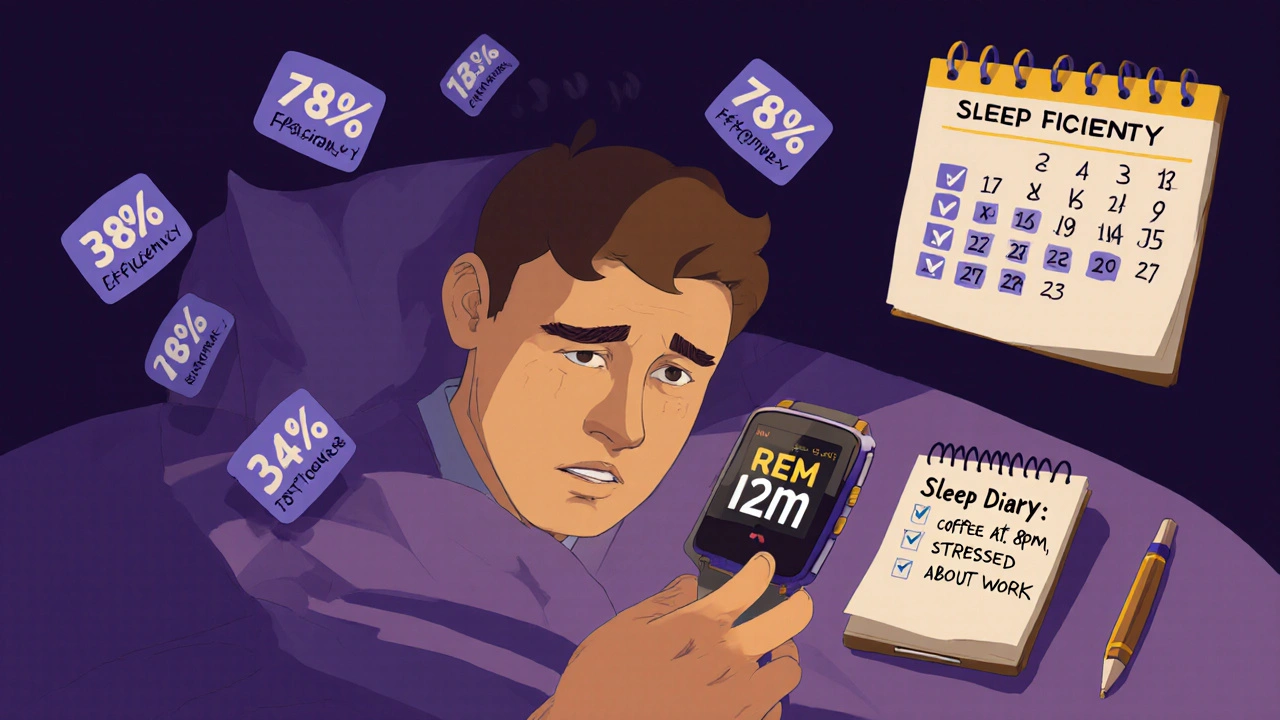
The Dark Side: Anxiety, Privacy, and Overreliance
There’s a new condition called orthosomnia - sleep anxiety caused by tracking. People start obsessing over their sleep scores. They lie awake worrying they’re not getting enough REM. They stop sleeping because they’re too focused on measuring it. Dr. Phyllis Zee from Northwestern University calls this “quantification without contextualization.” Numbers don’t tell the whole story. How you feel matters more. Privacy is another issue. Most consumer sleep apps don’t encrypt your raw movement data. Security researcher Alex Birsan found that many send unencrypted sleep logs to third-party servers. Your sleep patterns could be sold, leaked, or used by insurers down the line. The Senate held hearings on this in early 2024.What’s Next?
The tech is getting smarter. Garmin’s 2024 algorithm now uses heart rate variability to better detect wake states - boosting accuracy by 16%. The NIH funded a $2.8 million project at the University of Michigan to build AI models that improve wake detection by 27%. Apple’s rumored “Sleep Study” feature for Watch might combine actigraphy with sound, temperature, and breathing patterns. By 2027, experts predict 80% of primary care doctors will use actigraphy in routine wellness checks. But the goal isn’t to replace sleep labs. It’s to catch problems early - before they become chronic.Bottom Line: Is It Worth It?
If you’re tired of guessing, and you’ve already tried basic sleep hygiene - yes. A good actigraphy device can show you what’s really happening. For most people, a $200 Oura Ring or Fitbit Charge 5 is enough. You don’t need a $1,800 medical device unless your doctor recommends it. Track for two weeks. Look for trends. Don’t fixate on single nights. Talk to a sleep specialist if your sleep stays poor. Use the data as a tool - not a judge. Because sleep isn’t about hitting a number. It’s about waking up feeling like you’ve actually rested.Can actigraphy diagnose sleep apnea?
No. Actigraphy cannot diagnose sleep apnea. It only tracks movement and estimates sleep/wake cycles. Sleep apnea involves breathing interruptions, which require oxygen sensors and airflow monitoring - tools only available in a sleep lab or with a home sleep apnea test (HSAT) approved by the FDA. Actigraphy may suggest poor sleep quality that could be linked to apnea, but it can’t confirm it.
Is Oura Ring or Fitbit better for sleep tracking?
For total sleep time and sleep efficiency, both are similarly accurate - within 5-10% of clinical actigraphy. Oura Ring has better battery life (up to 7 days) and is more comfortable for all-night wear. Fitbit offers more detailed (but often inaccurate) sleep stage breakdowns and integrates better with fitness data. If you want clean, reliable sleep duration data, Oura is slightly better. If you want a fitness tracker with sleep features, Fitbit is more practical.
Do I need to wear it every night?
For reliable results, yes - for at least 7 consecutive days. Removing it for more than two hours per day reduces data validity by 18%, according to ActivInsights. Missing nights create gaps that algorithms can’t fill. If you forget one night, it’s not a disaster. But if you skip three or more, your data becomes unreliable.
Can kids use actigraphy devices?
Yes. Actigraphy is commonly used in pediatric sleep studies to track sleep patterns in children with ADHD, autism, or delayed sleep phase disorder. The devices are safe, non-invasive, and often worn as wristbands or clips. However, algorithms for children are less accurate than for adults because kids move more during sleep. Always consult a pediatric sleep specialist before using consumer devices for children.
How long does it take to see results from tracking?
You’ll start seeing patterns after 3-5 days. But meaningful insights - like how caffeine, stress, or travel affects your sleep - usually take 7-14 days. Most people report improved sleep awareness after one month of consistent use. Real behavioral change - like going to bed earlier or cutting screen time - takes longer. The device doesn’t fix your sleep. It just shows you what to change.
Are free sleep apps as good as wearables?
No. Free smartphone apps use the phone’s accelerometer or microphone, which are far less reliable than wrist-worn actigraphy. Phones move differently than wrists. They’re often left on nightstands, not worn. Studies show phone-based sleep tracking is 20-40% less accurate than wrist-based devices. They’re fun for curiosity, but not for real data.

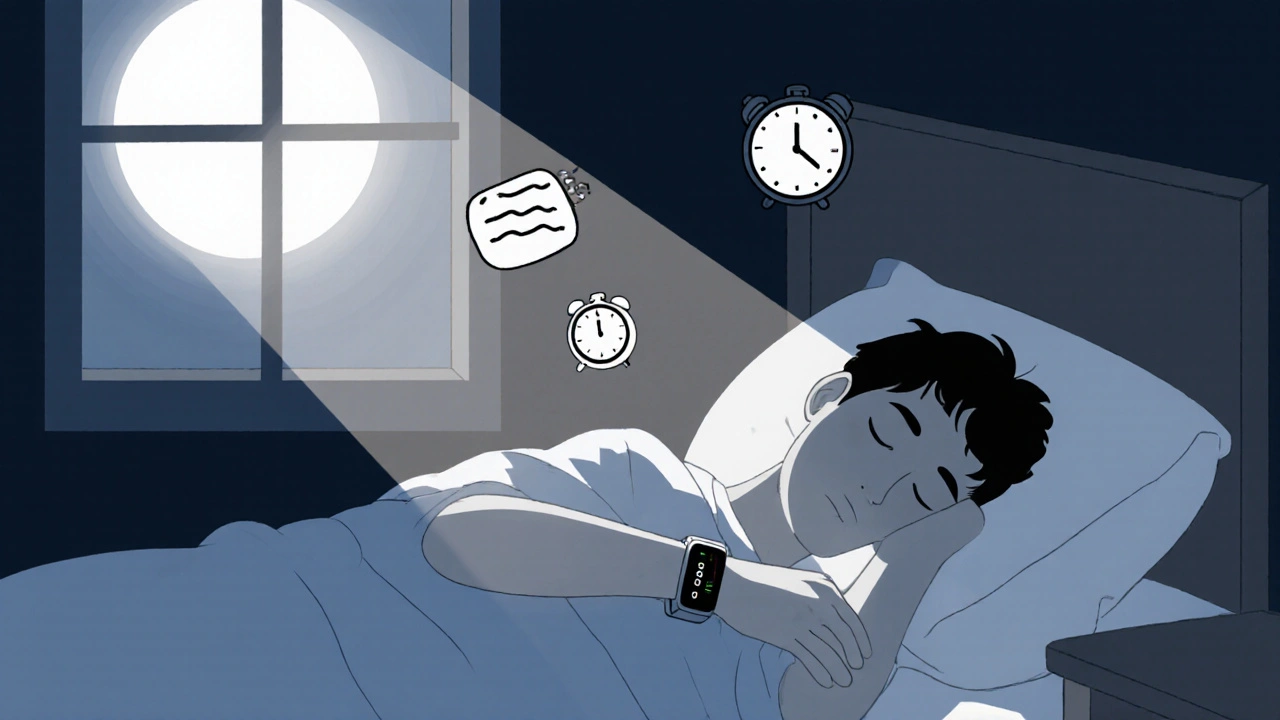
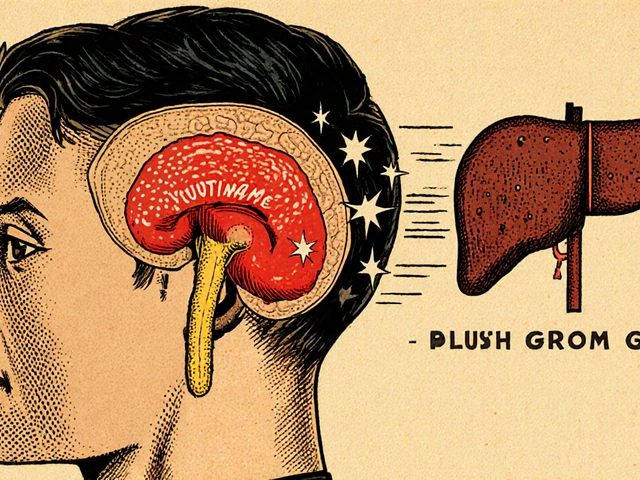
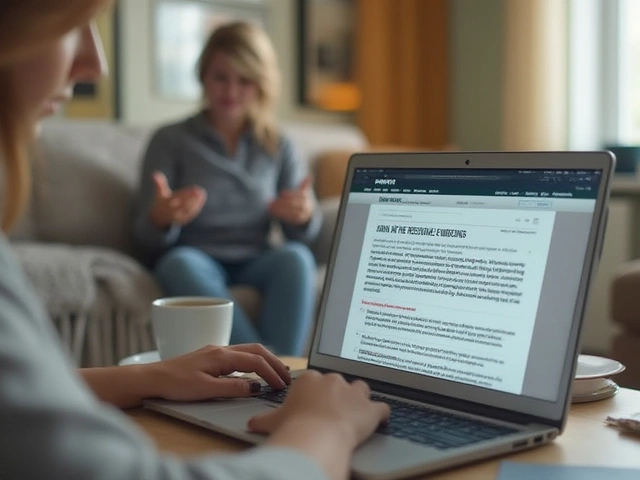
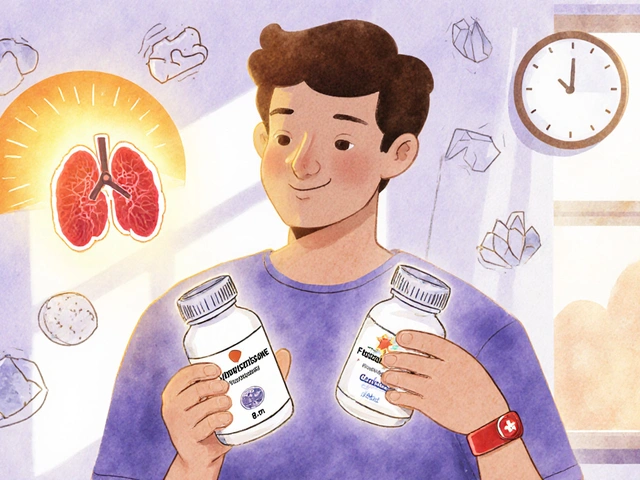
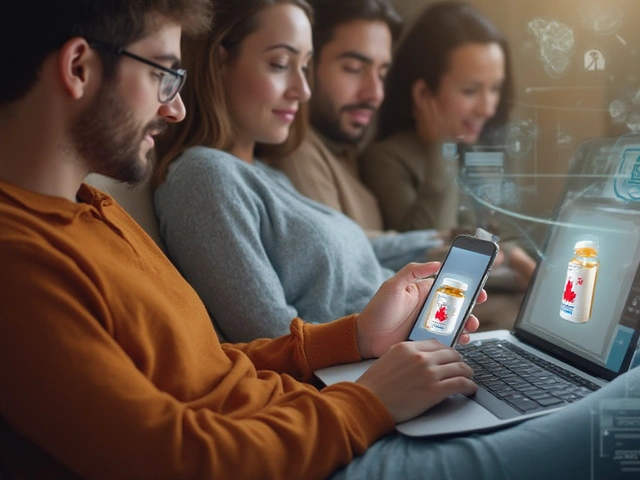

Jenny Lee
November 18, 2025 AT 04:22 AMWear it for two weeks, ignore the scores, and just notice how you feel in the morning. That’s all you need.
Evan Brady
November 19, 2025 AT 07:42 AMLet me tell you something most wellness apps won’t: actigraphy isn’t about precision-it’s about pattern recognition. I used an Oura Ring for six months while shifting my work schedule. The device didn’t tell me I had ‘bad sleep’-it told me I was falling asleep 90 minutes later every night I scrolled past midnight. That’s the power. Not the number. The narrative behind it.
And yes, the REM estimates are garbage. But total sleep time? Within 5% of my lab study. Don’t throw the baby out with the bathwater. Use it to catch your own habits, not to punish yourself for not hitting a magic 87% efficiency score.
Also-wear it on your non-dominant wrist. I wore mine on my right hand (I’m right-handed) and my WASO readings were 40 minutes higher than reality. Simple fix. Massive difference.
Shravan Jain
November 19, 2025 AT 11:41 AMOne must consider the epistemological limitations of quantified sleep. The actigraph, as a Cartesian instrument, reduces the phenomenology of rest to binary motion states-yet sleep is not merely the absence of motion, but the presence of a different ontological mode. One cannot measure the soul’s quietude with a triaxial accelerometer.
Furthermore, the commercialization of this technology has created a new class of sleep-obsessed neoliberals who mistake data for wisdom. The Oura Ring is not a cure-it is a symptom of late-stage capitalism’s colonization of the body.
And yet… I still wear mine. Hypocrisy is the price of modernity.
Ram tech
November 20, 2025 AT 05:19 AMu think u smart with all this tech? most ppl just need to go to bed earlier. no device needed. also ur data prob wrong cuz u wear it wrong.
Brandon Lowi
November 21, 2025 AT 11:00 AMAmerica invented sleep science. Then Europe turned it into a wellness cult. Now India’s selling rings that tell you you’re not sleeping enough-while their kids sleep on concrete floors with no AC. Wake up. This isn’t progress. It’s performance anxiety dressed in silicone.
And don’t get me started on the data privacy mess. Your sleep patterns? That’s the new fingerprint. The Chinese government’s already buying this data from third-party vendors. You think your Fitbit’s secure? Ha. You’re the product.
Real Americans don’t need gadgets to know they’re tired. They just drink coffee. And keep going.
Richard Couron
November 21, 2025 AT 20:40 PMEVERYTHING YOU’RE TOLD ABOUT SLEEP TRACKING IS A LIE. The FDA doesn’t regulate these devices the way they should. The algorithms? Secret. The companies? Owned by Big Tech, Big Pharma, and the military-industrial complex. They don’t want you to sleep better-they want you to be constantly monitored, constantly anxious, constantly buying the next upgrade.
Why do you think Apple’s pushing this now? Because they’re running out of reasons to make you buy a new watch. Sleep tracking? Perfect. You’ll buy one every 18 months because your ‘readiness score’ dropped.
And the worst part? They’re using your movement data to train AI that predicts your behavior. Your insomnia? Your late-night scrolling? It’s being sold to advertisers. To insurers. To employers. You think your boss won’t see your ‘poor sleep efficiency’ next review cycle?
Stop wearing it. Unplug. Sleep like a human. Not a data point.
Alex Boozan
November 22, 2025 AT 16:14 PMActigraphy is the gateway drug to sleep neuroinformatics. The 3-axis accelerometer is merely the proximal sensor in a multi-modal biometric cascade-when fused with HRV, skin conductance, and ambient thermal gradients, you’re no longer tracking sleep-you’re reconstructing circadian neurodynamics in real time.
But here’s the operational bottleneck: consumer-grade firmware lacks the signal-to-noise resolution to disambiguate REM microarousals from artifact. Hence, the 30-minute REM error margin. This isn’t a flaw-it’s a feature. It forces users to engage with the data, not ingest it.
And yes, the privacy implications are catastrophic. Raw accelerometer data is a behavioral fingerprint. If you’re not encrypting it end-to-end with PGP and storing it locally on an air-gapped Raspberry Pi, you’re already compromised.
mithun mohanta
November 23, 2025 AT 20:25 PMOh wow. So you’re telling me that my $300 Oura Ring-my sacred, glowing, minimalist temple of rest-is just… a glorified pedometer for your dreams? I’ve been crying over my ‘deep sleep deficit’ for months. I’ve changed my diet. I’ve meditated. I’ve bought the lavender pillow spray. All because some algorithm decided my wrist twitched too much at 2:17 a.m.
And now you say it’s wrong? That my ‘sleep efficiency’ is meaningless? That I’ve been performing anxiety for a Silicon Valley AI? I feel… betrayed.
Who do I sue? The ring? The app? The ghost in the machine that told me I needed more REM to be worthy?
I’m not mad. I’m just… disappointed. Like I found out my therapist was a chatbot.
Joshua Casella
November 23, 2025 AT 20:53 PMLet’s be real: if you’re using a wearable to fix your sleep, you’re already on the right path. The device isn’t the problem-it’s what you do with the data. I’ve helped over 50 people improve their sleep using actigraphy. Not because the numbers were perfect. But because they started paying attention.
One guy thought he slept 7 hours. The device showed 5.5. He cut his evening coffee. His energy doubled. Another woman thought she woke up once. It was 12 times. She stopped checking her phone at midnight. Her mood lifted.
Don’t overthink it. Don’t fear the data. Use it as a mirror-not a verdict. And if you’re still struggling? Talk to a specialist. No gadget replaces a human who knows how to listen.
Kevin Jones
November 24, 2025 AT 16:38 PMThe real tragedy isn’t the inaccuracy-it’s the surrender. We’ve outsourced our intuition to algorithms. We no longer ask, ‘Do I feel rested?’ We ask, ‘Did I hit 85% efficiency?’ Sleep has become a KPI. And we’re failing.
But here’s the paradox: the very tools that alienate us from our bodies are also the ones that force us to notice what we’ve ignored for decades. The actigraph doesn’t lie. It just reveals the lie we’ve been telling ourselves.
Maybe the goal isn’t better sleep. Maybe it’s better awareness.
Erica Lundy
November 26, 2025 AT 00:09 AMThe epistemological rupture between subjective experience and objective measurement is not merely technical-it is existential. When the body becomes a data stream, the self becomes an anomaly. The actigraph, in its clinical neutrality, does not ask: ‘Do you feel rested?’ It asks: ‘Did motion cease for 30 consecutive minutes?’
And yet, we grant it authority. We trust the algorithm more than our own fatigue. We have become the ghosts haunting our own biometric records.
Perhaps the true innovation is not in the sensor-but in the courage to ignore it. To sleep without scoring. To rest without proof.
There is wisdom in the unmeasured night.
Evan Brady
November 27, 2025 AT 20:44 PMJust saw Erica’s comment. That’s the exact point. We’re not tracking sleep to optimize-it’s to remember we’re human. I keep my Oura Ring on, but I don’t open the app unless I’m feeling off. Sometimes, the best data is the silence between the numbers.